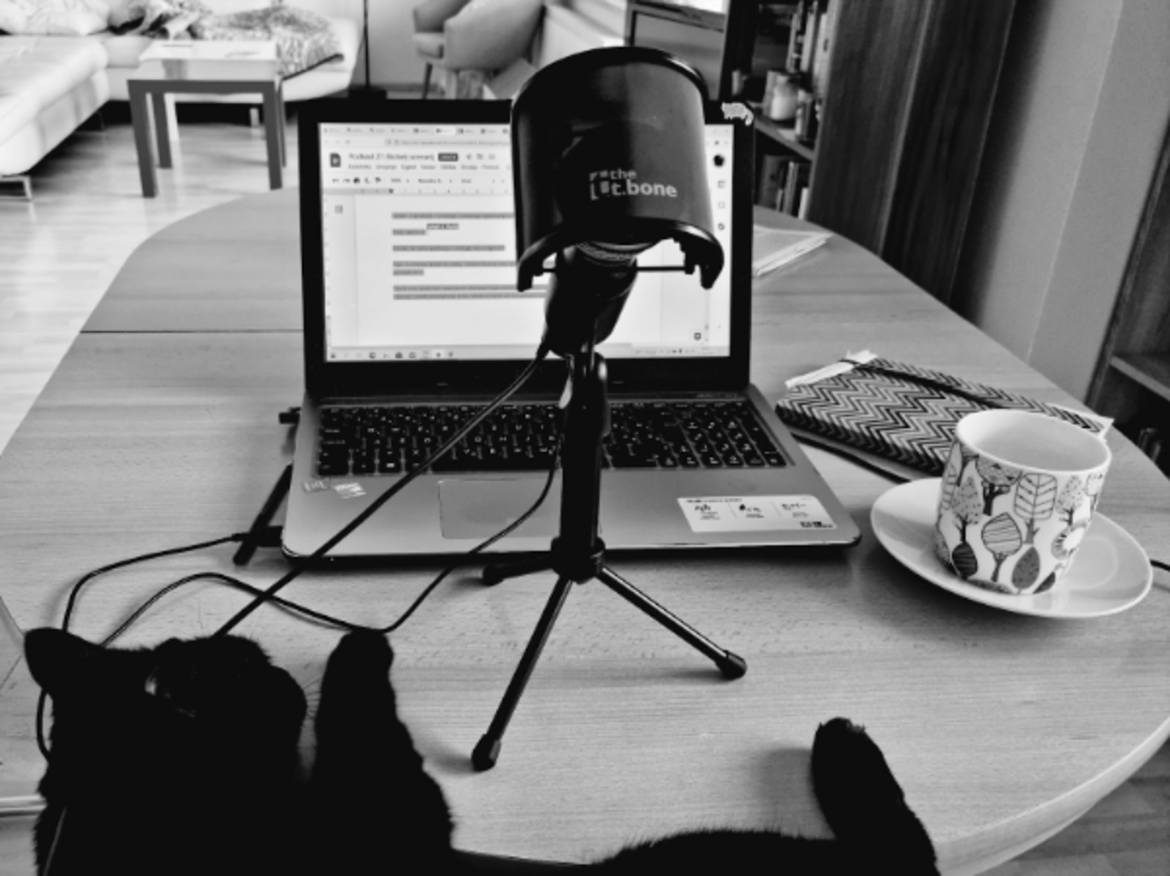Data heavy stories: 3 tips for the production of engaging podcasts
At Pod črto we started our podcast production almost six years ago. First, it was mostly us, journalists and editors, talking about our investigations and data analyses we had first published as the articles.
At the same time, we knew from the very beginning that we wanted to eventually move into a more narrative and documentary direction.. Our aim was not to just talk about our findings but to take our listeners with us into the stories, despite being complex and data-heavy.
We are a small investigative media outlet with a small team (less than 5 people). Our podcast production started with just the two of us without any equipment, even microphones were borrowed. But over time, through trial and error, and by learning from others, we developed various low-budget approaches to production of engaging podcasts that are based on data-heavy investigations.
Tip 1: Bring characters into your podcasts
Not everyone you include in your podcast has the potential to be a character. The idea of the characters is that they become either a vehicle of your story or we, as listeners, become invested in them. We want to know more about them and what happened to them.
We used this approach in production of our investigative series about astroturfing. In the podcast series Fake realities we introduced a series of characters that personalize very abstract and data heavy issues about attacks on Twitter.
Example of our character is Fletcher Barnes we meet in the first episode. (You can listen to him speaking in the teaser for the episode HERE). His story is engaging – he was living his casual life in Florida and one day someone reached out to him with information that his photos had been stolen. What’s more, someone created a fake profile with them. His photos were used by one of the fake profiles we found in our investigation on astroturfing.
What is important for your characters, in addition to engaging personal stories directly connected to your investigation, is their voice. If they do not speak with energy and eloquence, it would be very hard to make them the main character of the podcast episode.
Tip 2: Materialize your data
Sometimes the data we talk about is very complex. Therefore, it is hard for the audience to identify with the issues that are so big we cannot imagine the real consequences anymore. Or our own contribution to the problem.
For example: we have a lot of data on the problems with plastic (Find our articles here: Slovenia and the EU have a problem with plastic waste and Slovenia spends millions of taxpayers’ money to dispose of uncollected waste).
In the podcast production we have two options: we could just talk about the data we have or we could try to materialize it as well. That’s what we did for the Problems with plastic podcast. (You can check the English trailer HERE).
Specifically: instead of just talking about the data, we documented the process of analyzing our own contribution to the problem with plastics. We included the process in the form of an audio documentary in the podcast episode “What is our plastic imprint?”.
Members of Pod črto team were collecting their own packaging waste for 14 days and in the podcast we met to build a square of all collected waste in the field to see our own “plastic imprint”. Our own personal findings are in post-production linked to global issues with plastics .
Tip 3: Let your audience experience the issue
Sometimes there is an opportunity for your listeners to actually experience the issue you investigated in the form of data-analysis.
In 2021, we published an investigation about the rise of outdoor advertising in the capital of Slovenia. We uncovered that the citybike system BicikeLJ has a “secret price” users are not aware of. To develop the system of rental bikes around Ljubljana, the municipality exchanged public spaces for outdoor advertising, even in the historical parts of the town.
In the podcast episode “Bike for 3 euros, ads for 22 years” we rented a bike from the BicikeLJ bike renting system and took our listeners with us on the tour around Ljubljana.
Since we geolocalized all billboards, lightboxes and citylights that were built in exchange for the bike rental system, we followed the path identified previously by our data analysis. (You can see the trailer HERE).

